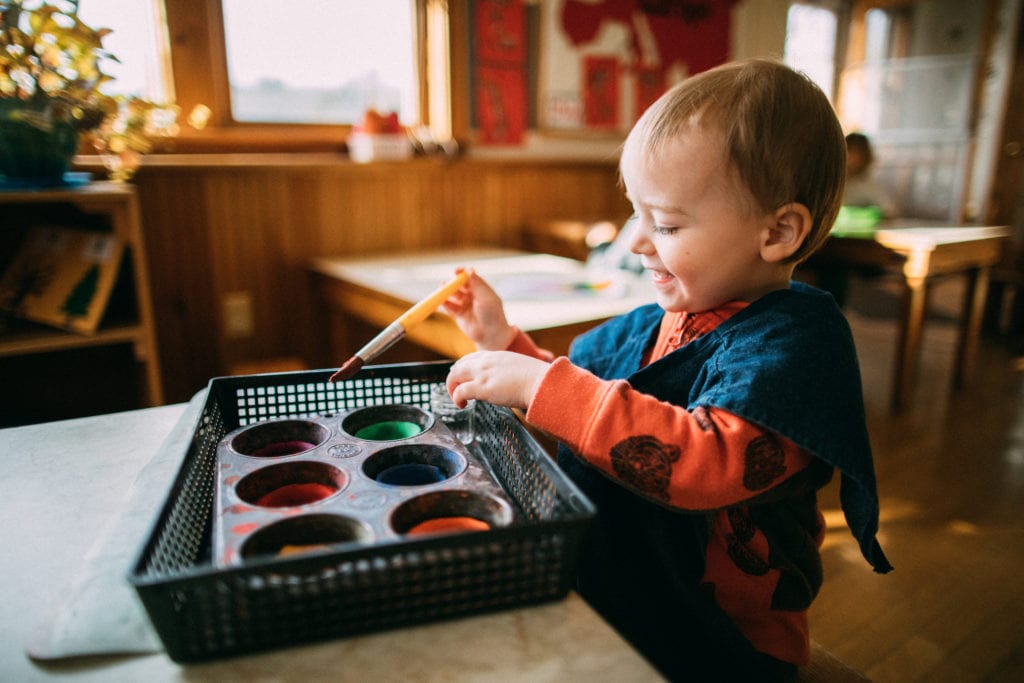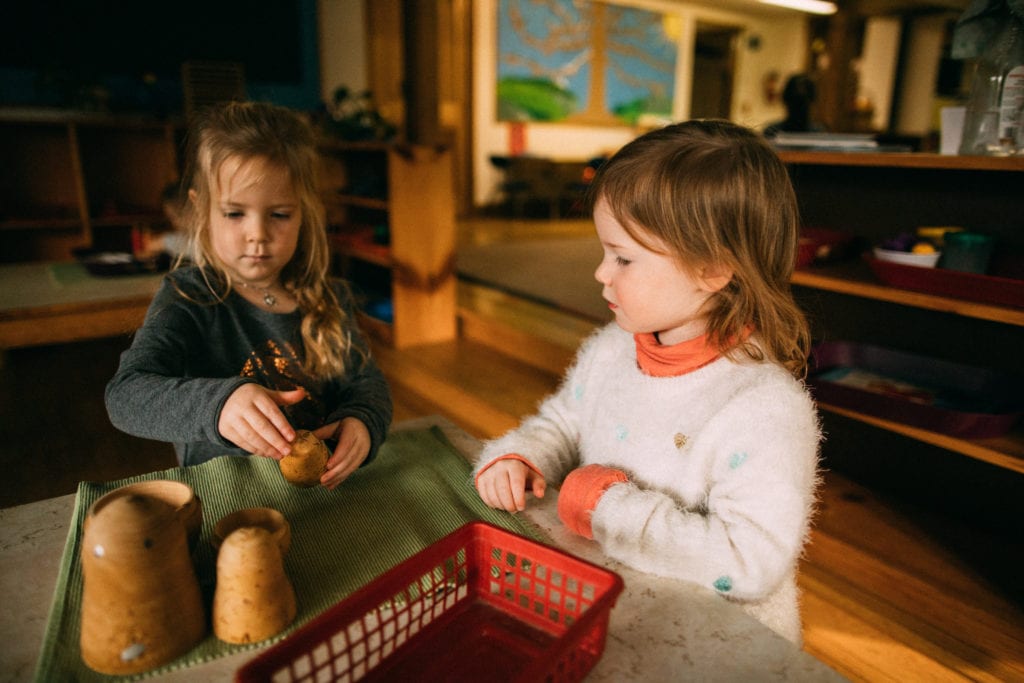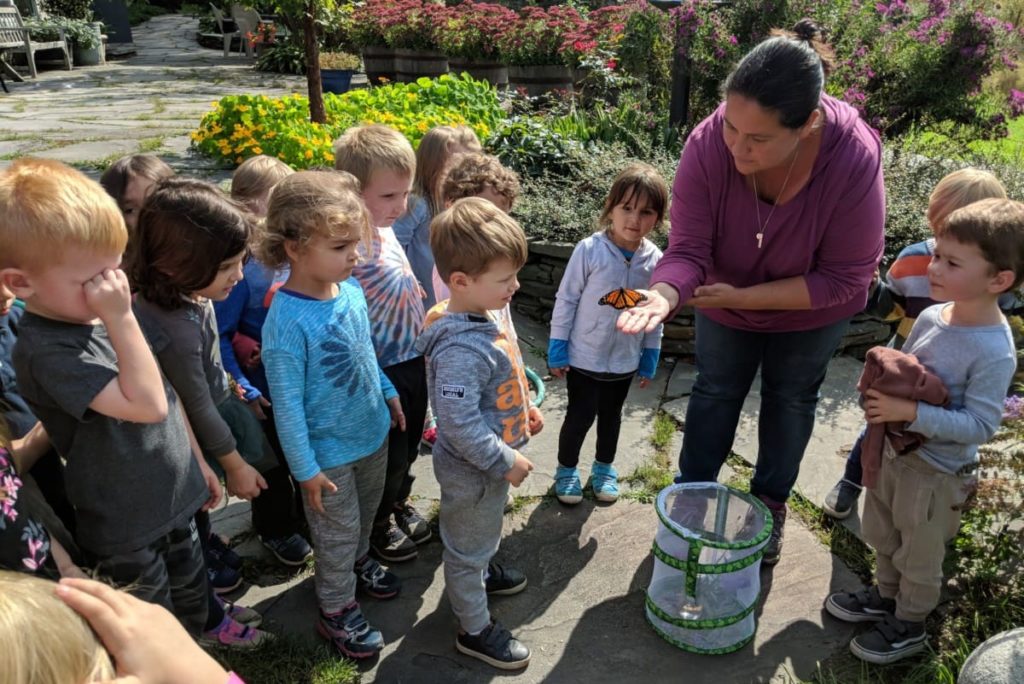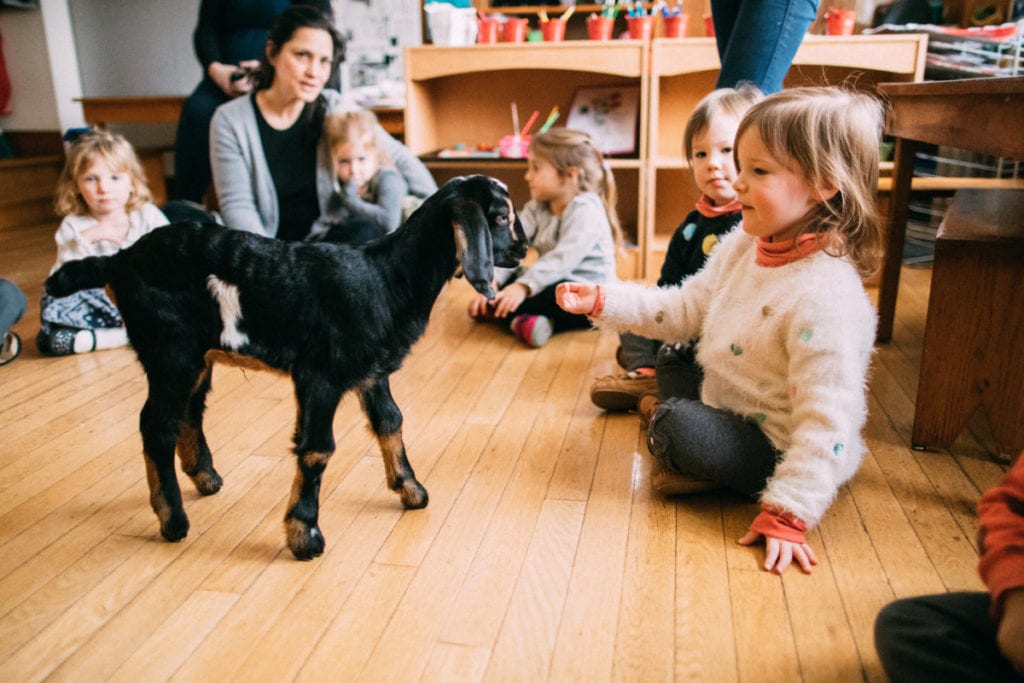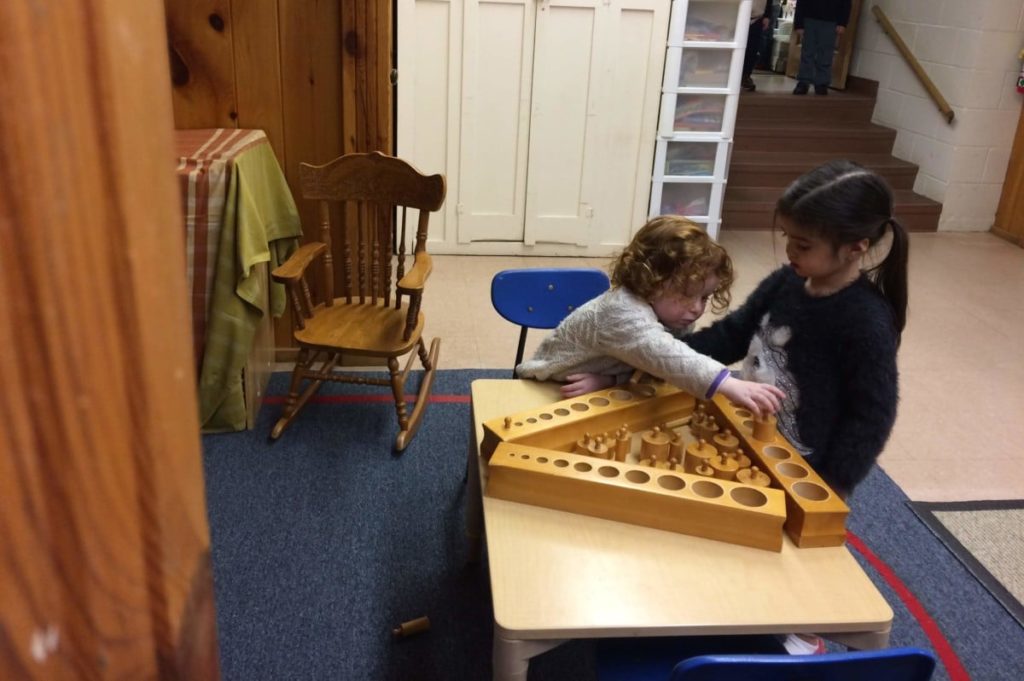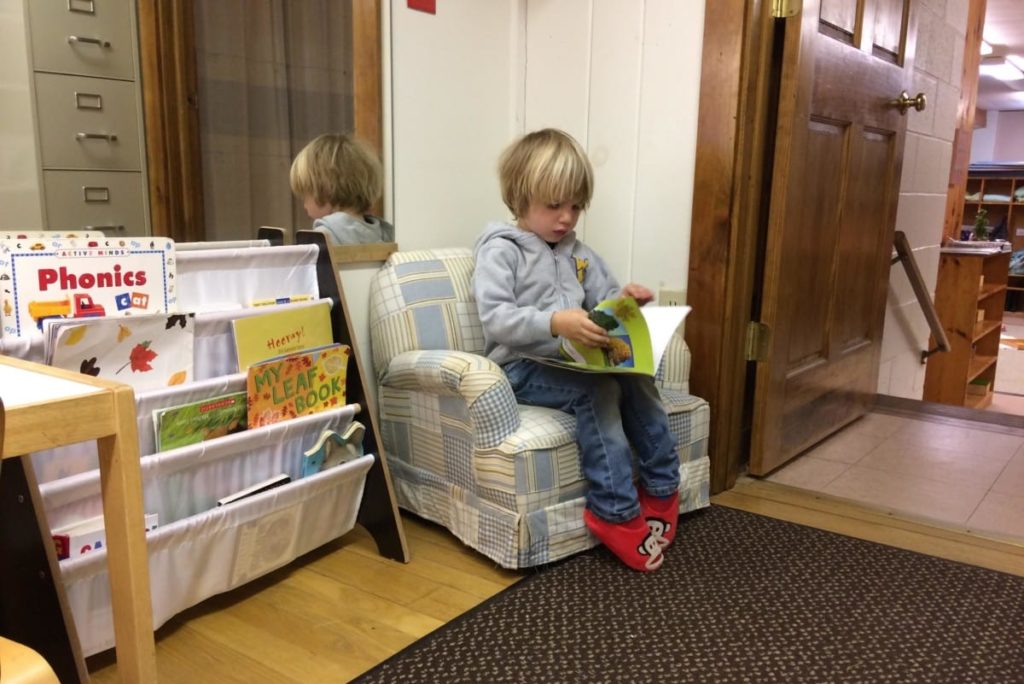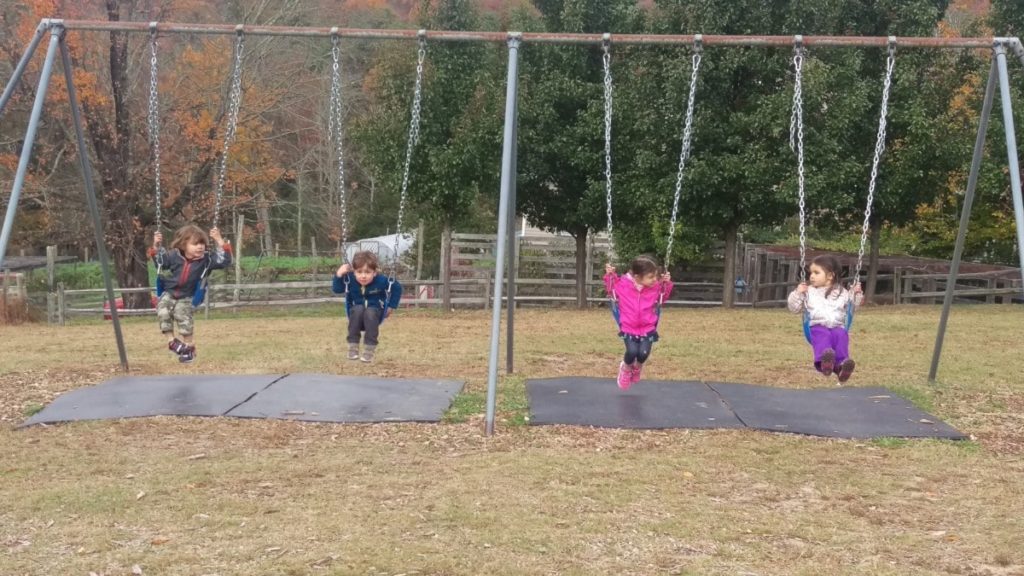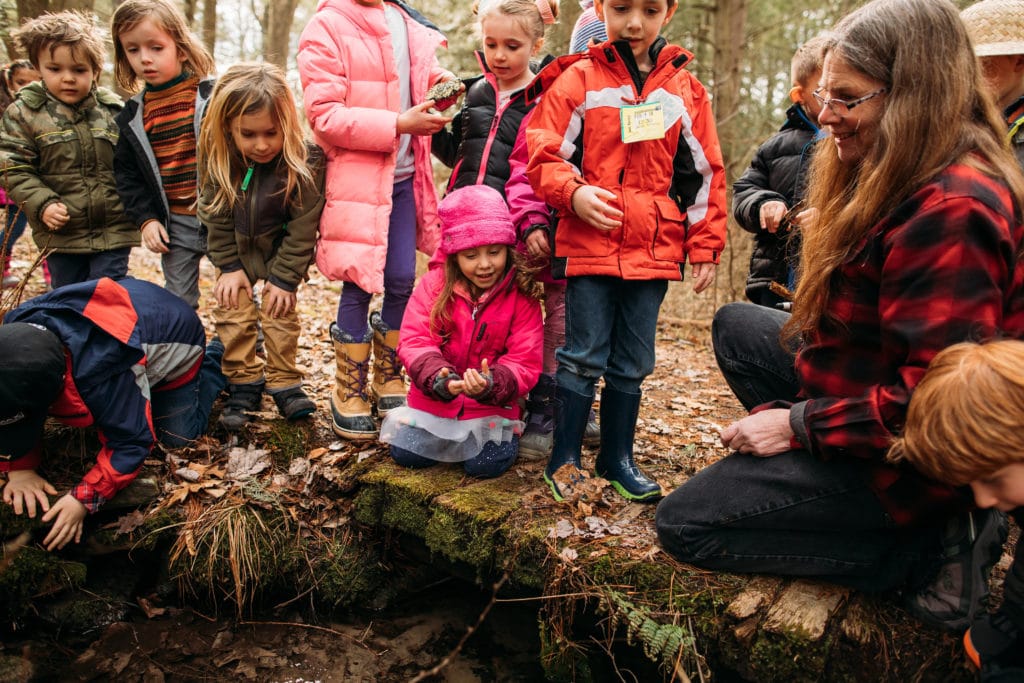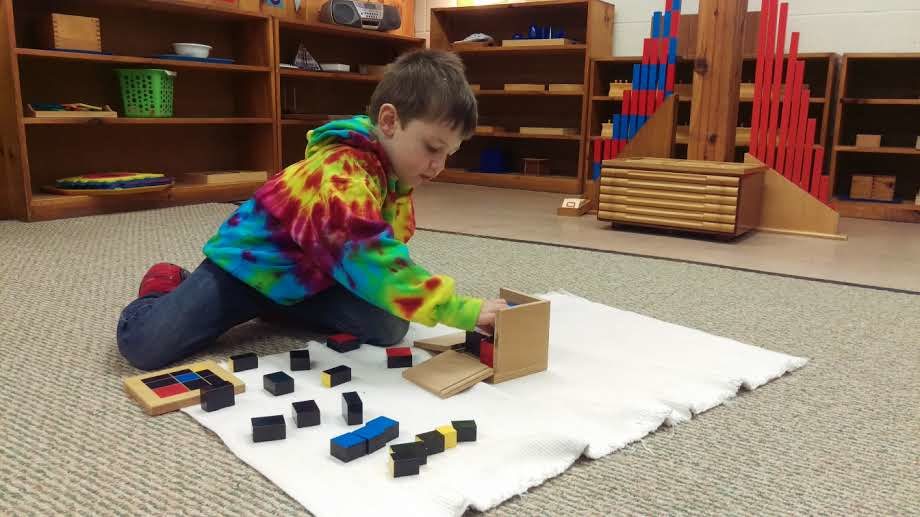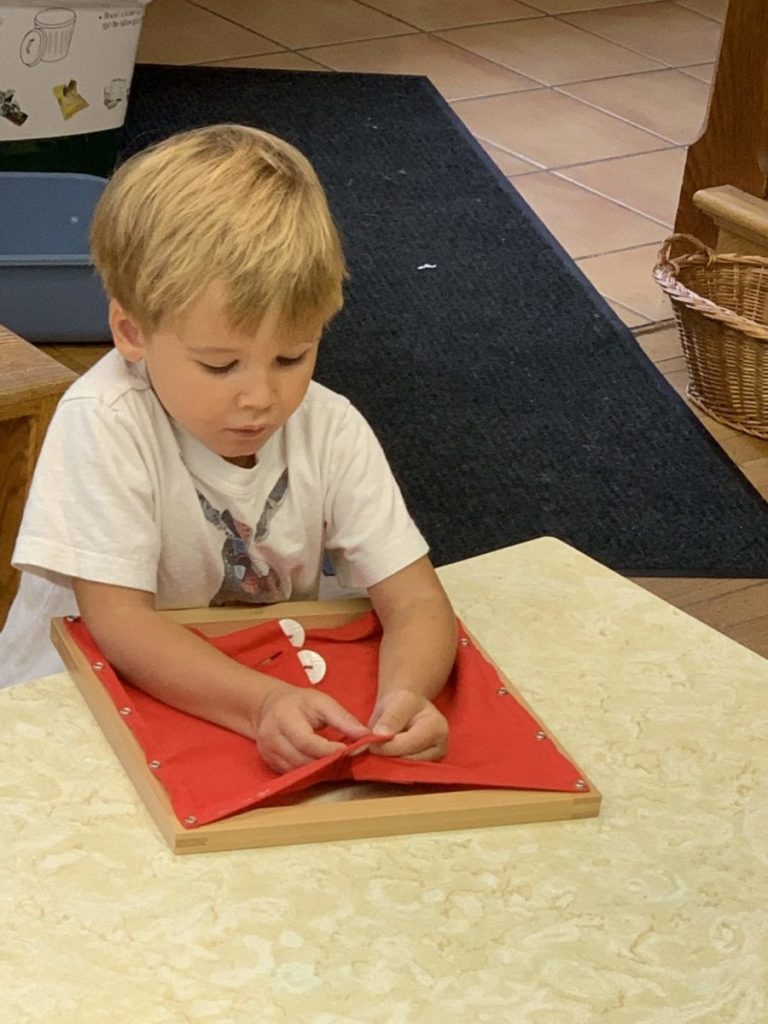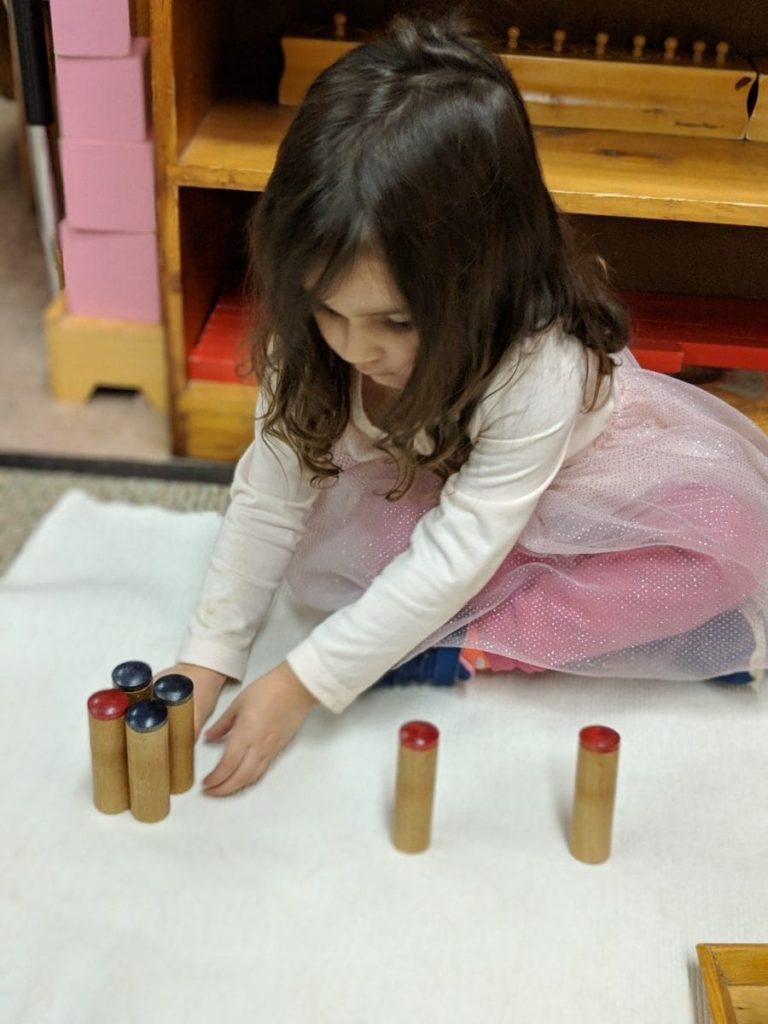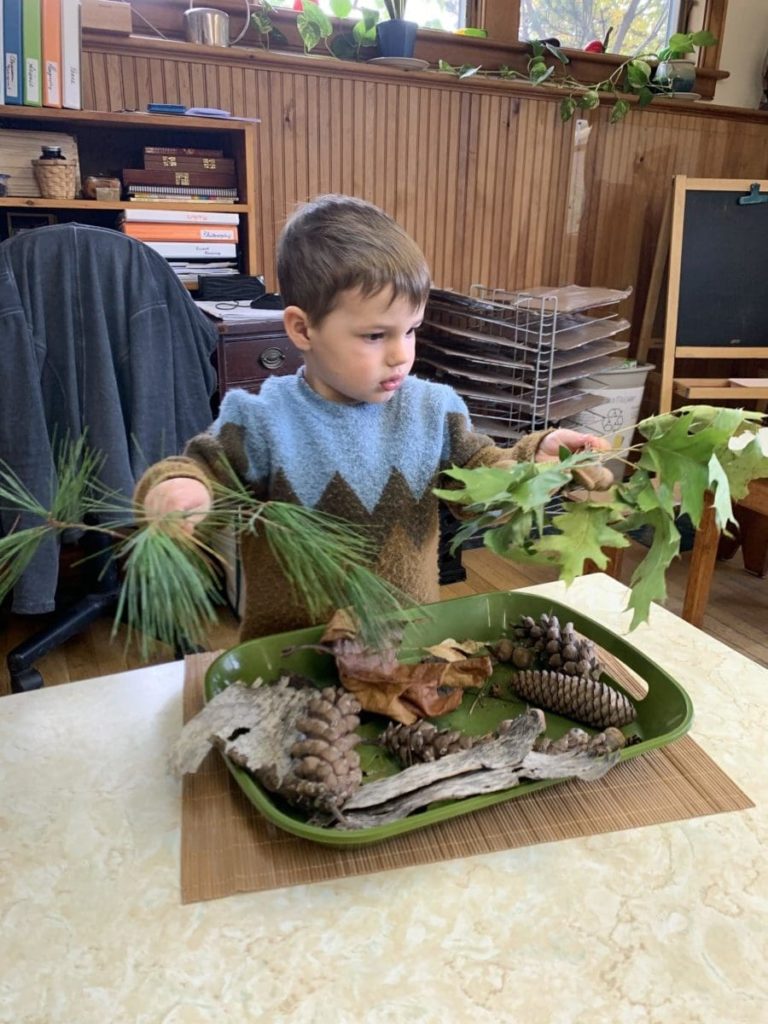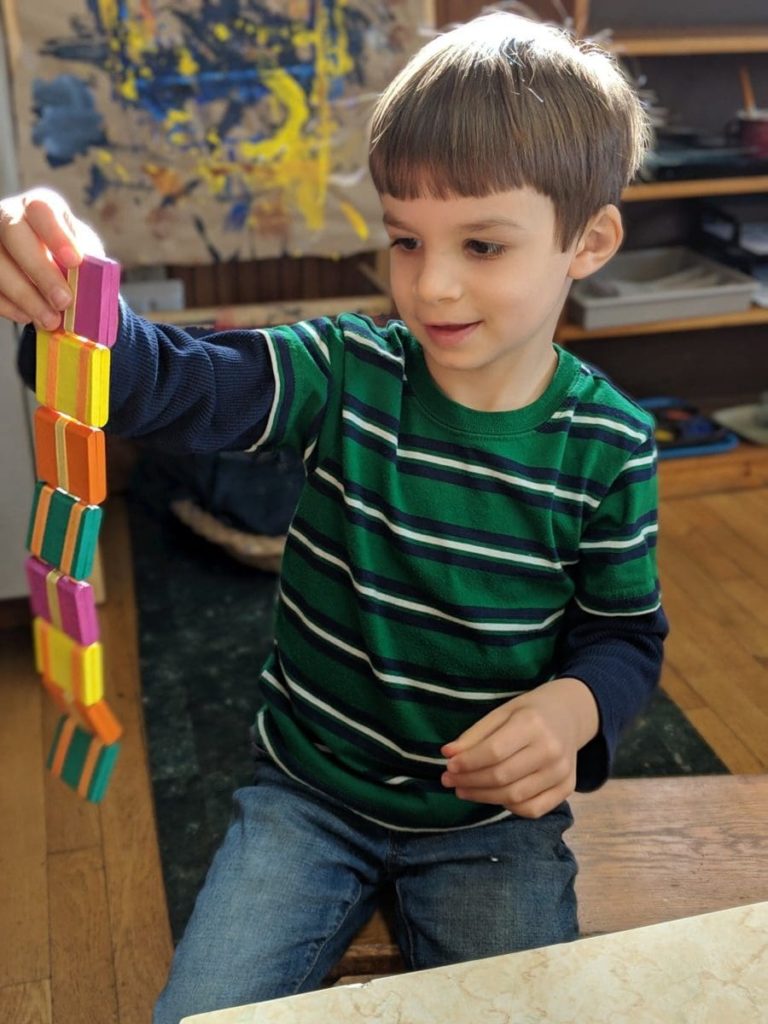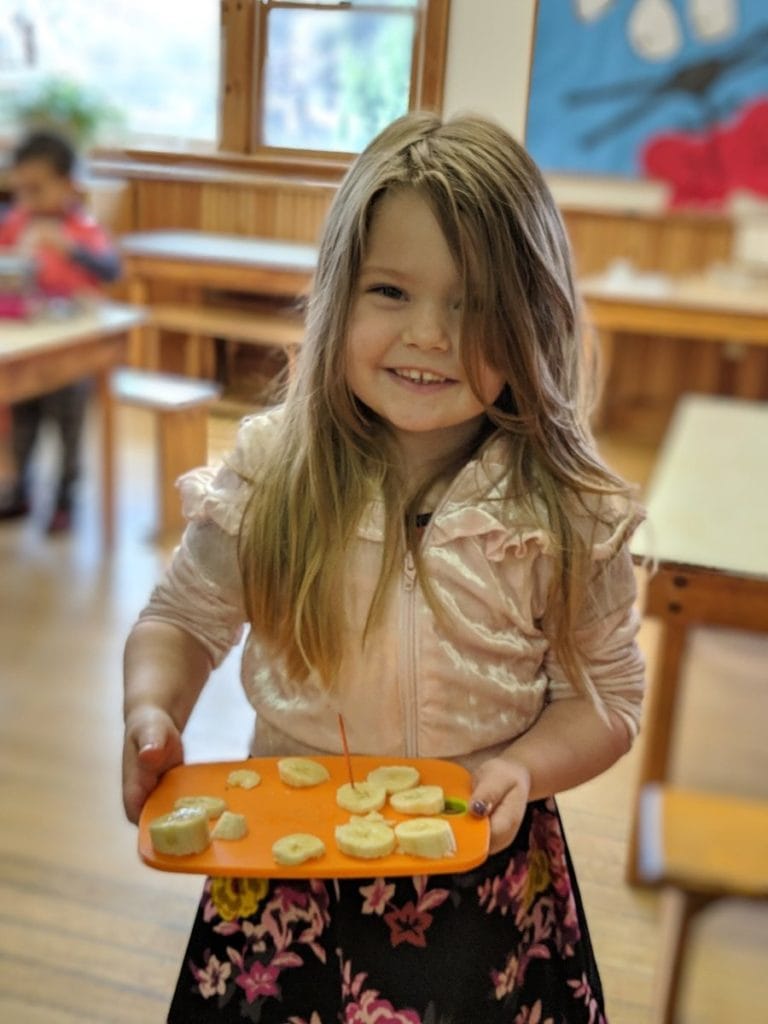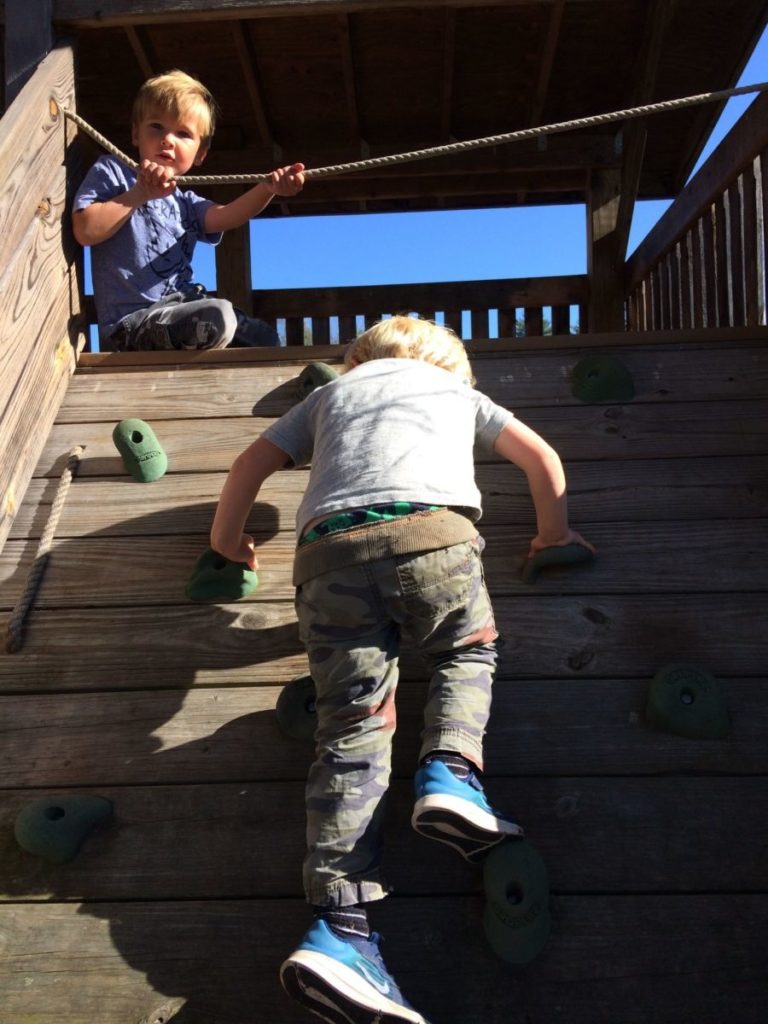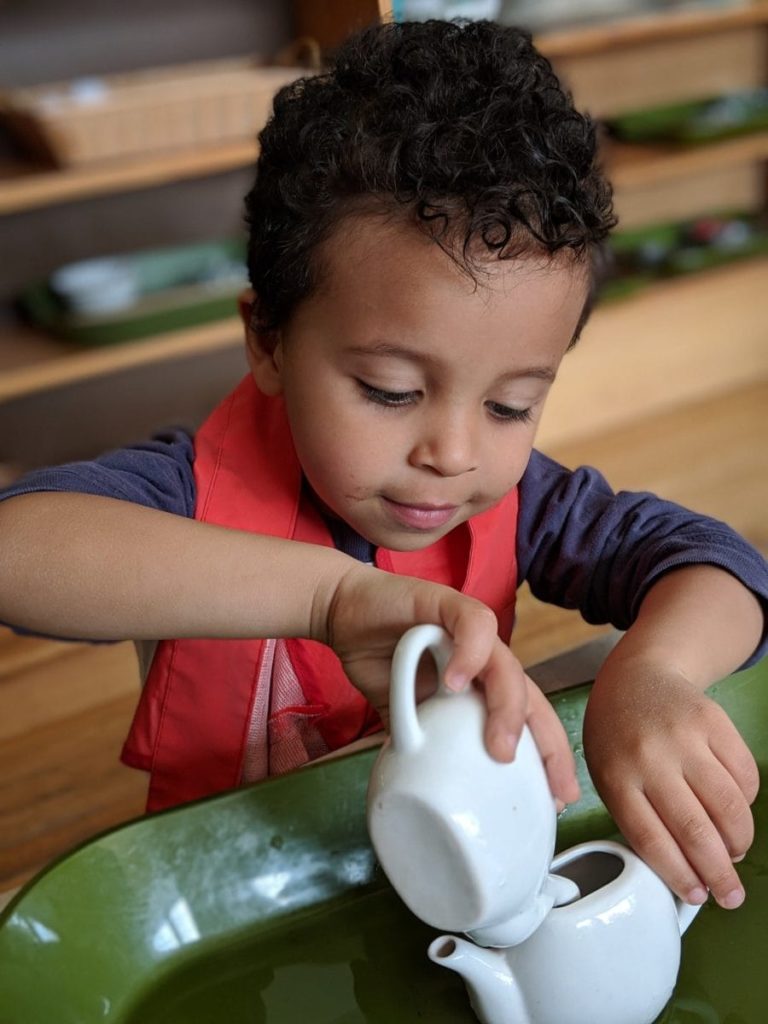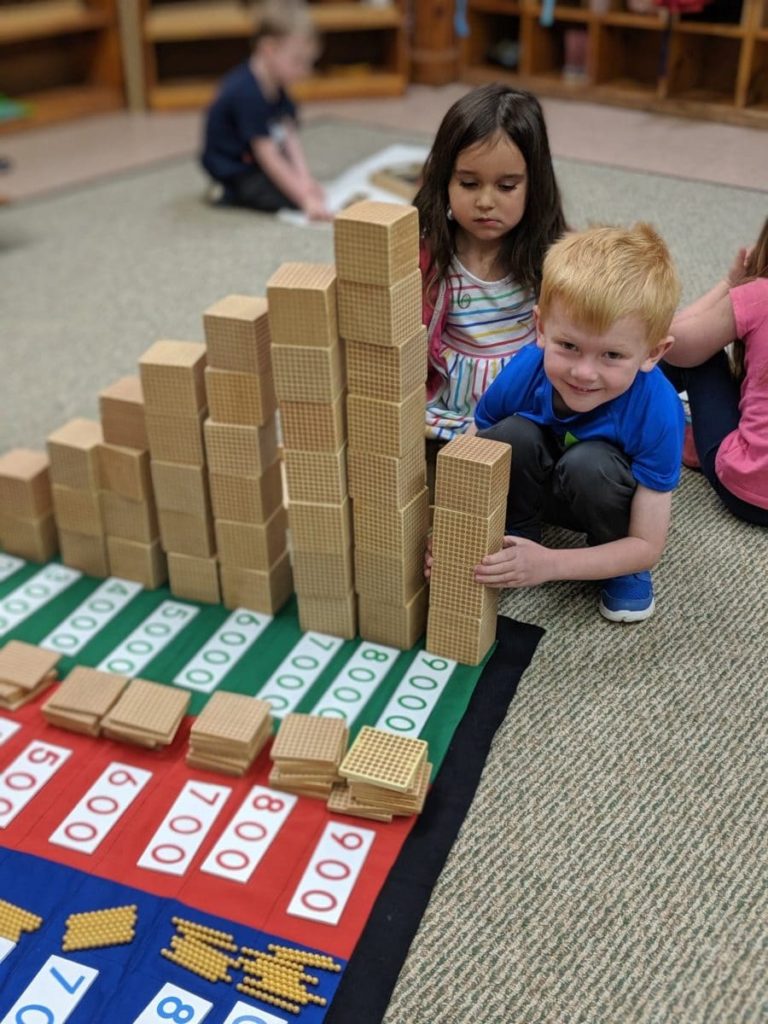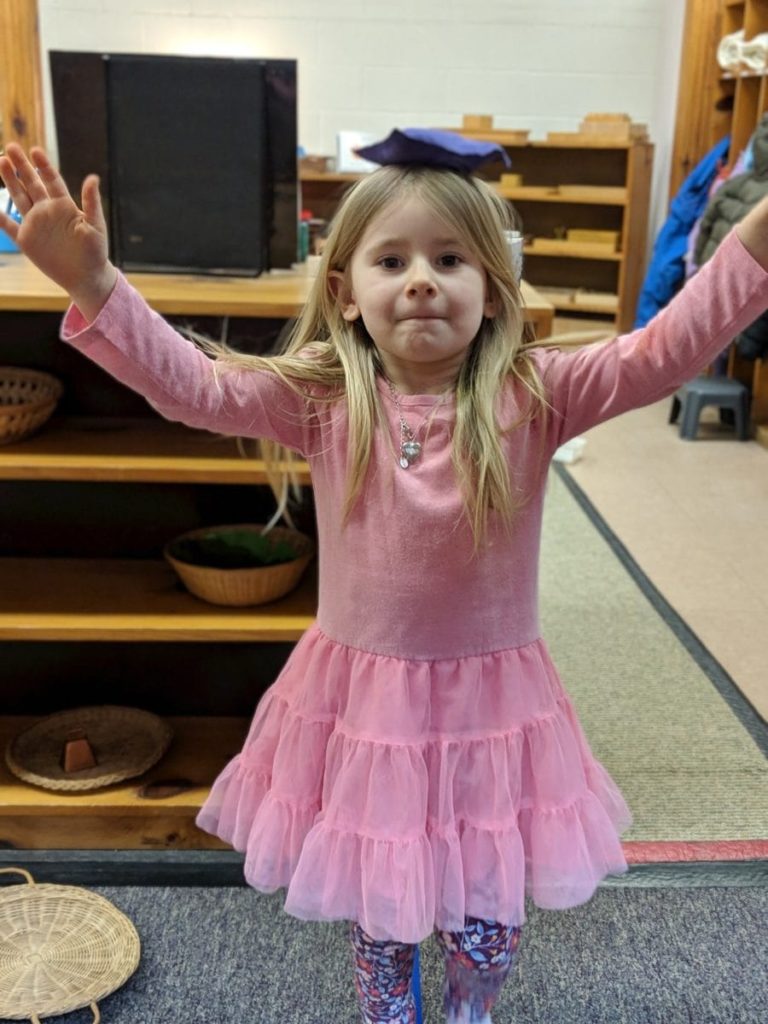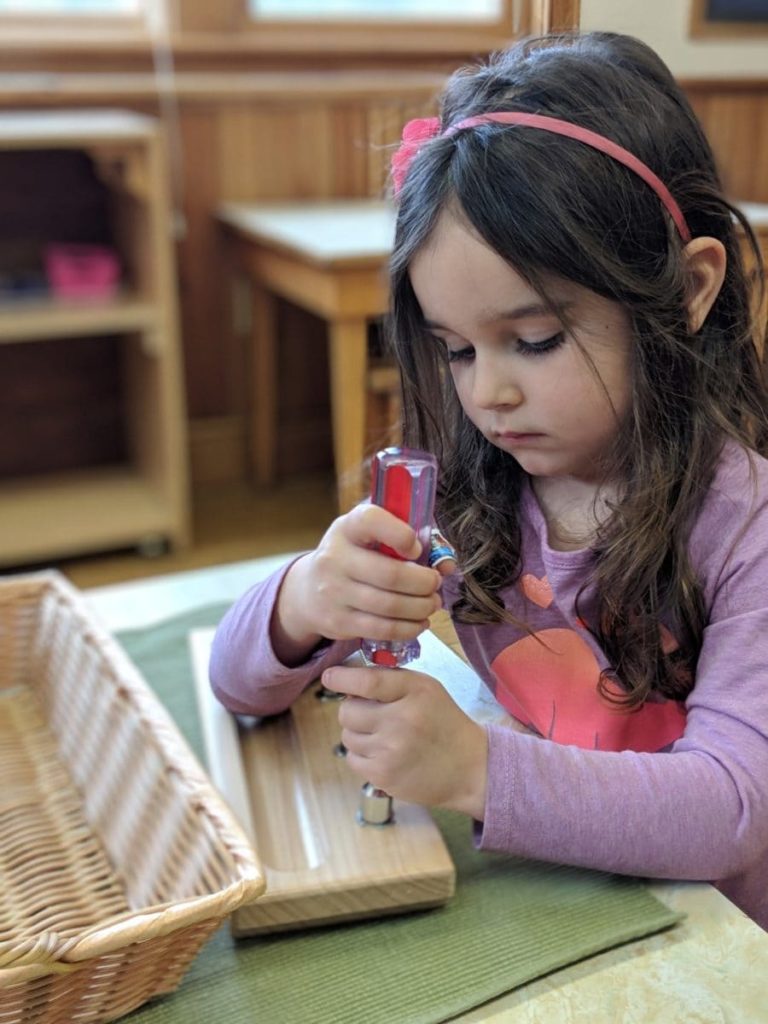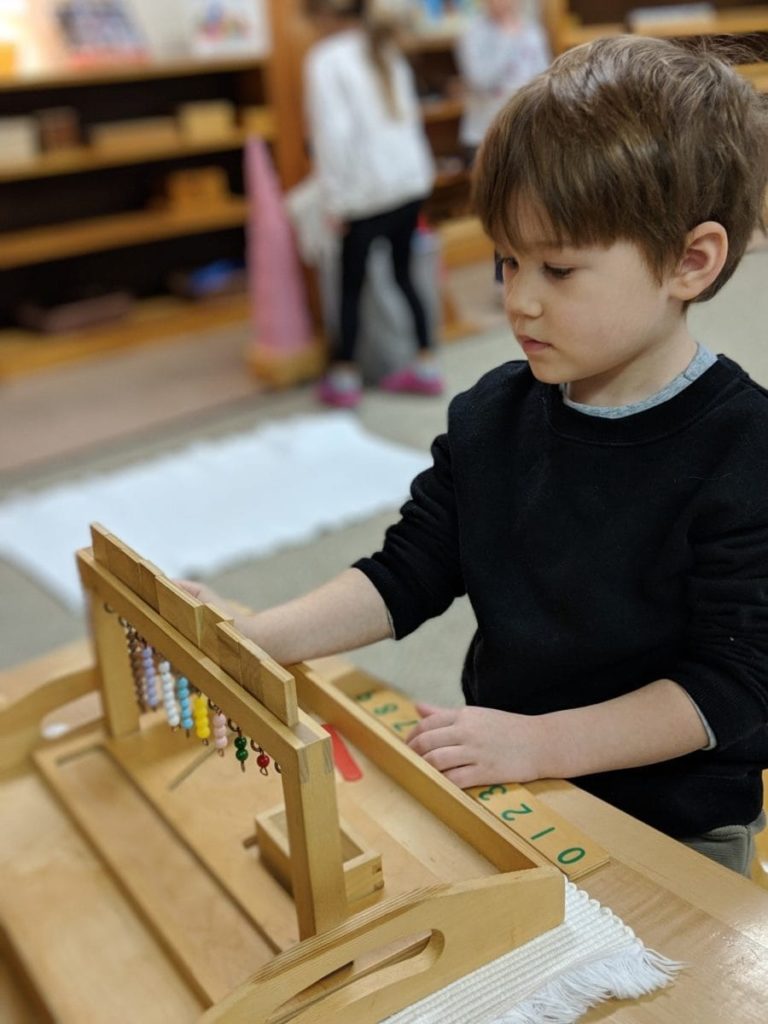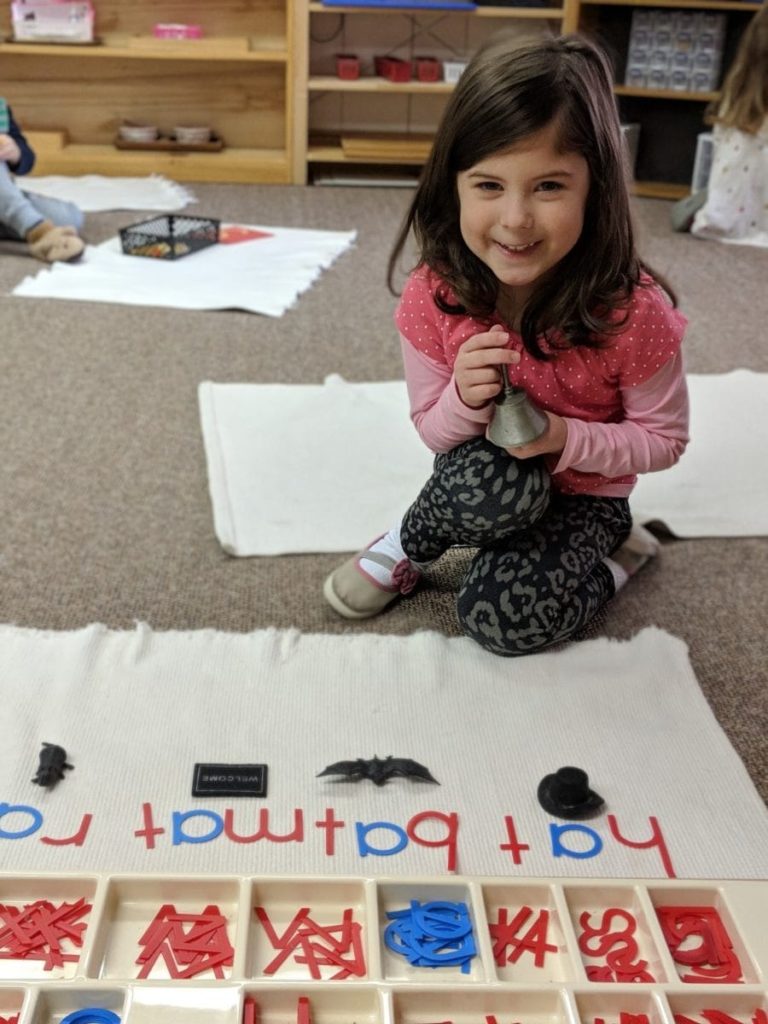Young children primarily explore through their senses, and our sensorial area allows your child to learn how to discriminate, order, classify, and grasp abstract concepts such as length, width, mass, and temperature. This allows your child to become more logical and perceptive. Typical materials include the tower of cubes, brown stairs, red rods, geometric solids, sound cylinders, Montessori bells, and other matching activities with color, weight, texture, and dimension.
The genius of the Montessori approach is that through work with materials such as the binomial and trinomial cube, your child will work at a purely sensorial level with the advanced abstract concepts of squaring and cubing.
Your child will internalize the very abstract concepts of numbers, symbols, logical sequences, and basic math operations. Children are guided through sequential work in three math tracks: linear counting, operations, and place value/decimal system.
Numerals and counters help students make 1:1 number to symbol associations, while operations with objects give them a concrete experience of addition, subtraction, multiplication, and division. Our students love to work with the Montessori bead bars, hundred board, short chains, and long chains that teach linear counting and lay the groundwork for multiplication fact memorization. Finally, place value is taught with the beautiful golden bead material designed by Maria Montessori herself.



